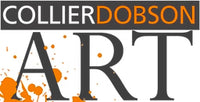Last week we explored some of the female artists who were fundamental, yet less well documented than their male contemporaries, in some of art history’s most important movements (read the article here). In this article we move into the 20th century, and examine how the feminist movements helped to bring women in art into the foreground.

Although initially experiencing a rise in feminist ideology during the Mexican Revolution in 1910, this was subsequently minimised in post-war Mexico. It was this oppression and abject denigration towards women, however, that inspired one of the greatest female artists of all time’s own work years later: Frida Kahlo. Creating a body of work across three decades, her self-portraits used elements of surrealism to convey the pain and anguish she endured throughout her life. She was acutely capable of expressing her messages intended to highlight injustice and inequality, stating “It’s not possible to present an accurate picture of our culture without all the voices of the people in the culture […] you can’t have a good survey art show without women and artists of colour”. Despite this, it wasn’t until many years after her death, during the second-wave feminist movement in the 1970s, that her work found extensive acclaim
In the groundbreaking article Why Have There Been No Great Women Artists? by Linda Nochlin in 1971, the view that women had been systematically erased from art history was explored, calling out the institutional barriers historically faced by women in the Western tradition. It echoed the civil-rights advances that were taking place at the time, and is considered required ‘feminist art history’ and ‘feminist art theory’ reading.

Another pioneering female artist is Betye Saar, best known for her assemblage style artworks and her influence in the Black Arts Movement and Black Women’s Movement in the 1970s. Her piece The Liberation of Aunt Jemima, which repositioned the derogatory mammy figurine as a warrior figure, is feasibly her most famous. The 3-dimensional work voiced her outrage at the representation of the Black community in America at the time and has since become a symbol of radical feminist art.
The third-wave feminist movement - which focused on reproductive rights, sex positivity, trans feminism, and intersectionality - took place in the late 1980s and 1990s, and, in 1985, the anonymous group of female feminist artists known as ‘Guerrilla Girls’ was formed in New York, with the goal of fighting gender and racial inequality in the arts community. They are well known for creating bold protest art, including the large billboard piece Do Women Have To Be Naked To Get Into the Met. Museum? - a bright yellow and pink poster, picturing a naked reclining woman in a gorilla mask, emblazoned with the facts “less than 5% of the artists in the Modern Art Sections are women, but 85% of the nudes are female”. Their fly-posting style of visual communication was designed to convey their message in a swift and accessible way to reach as many people as possible, in much the same way as the ‘advertising’ methods of Barbara Kruger and Jenny Holzer.
 Whilst great strides have been made in working towards equality for the sexes in the art world, some discriminatory ideas that were popularised in early art history are conceivably still underlying today, and even the most outstanding female artist’s levels of recognition have not quite matched their male peers. Indeed, in 2015 award winning artist Tracey Emin speaks to the inequality, saying: “You’ve got more female artists now, who have much higher profiles. But that’s only been over the past 50 years, so we need another 150 years to get the same situation and it’ll be equal for men and women in the art world.”
Whilst great strides have been made in working towards equality for the sexes in the art world, some discriminatory ideas that were popularised in early art history are conceivably still underlying today, and even the most outstanding female artist’s levels of recognition have not quite matched their male peers. Indeed, in 2015 award winning artist Tracey Emin speaks to the inequality, saying: “You’ve got more female artists now, who have much higher profiles. But that’s only been over the past 50 years, so we need another 150 years to get the same situation and it’ll be equal for men and women in the art world.”
In the current day art sector, women make up more than 50% of working visual artists, and many museums and galleries are (finally) actively working to correct the longstanding problem of their underrepresentation and redress the balance of gender in the arts.

Organisations like The Women in Art Prize have also been established with the aim to support and celebrate female artists. This particular female-led not-for-profit community selects 22 emerging women artists each year to exhibit in London, offering them “a genuine opportunity to further their careers and for art collectors to invest in the future of the art world’s emerging talent”, then awards the first prize to just one of the artists who they consider to have “exceptional potential to become an established professional artist”. In 2020 that prestigious award was received by Devon based artist Corinne Young for her piece entitled Reasons to be Alone…and we are thrilled to have been representing Corinne here since June 2023.
To substantiate the value of acknowledging and promoting female artists Corinne has, indeed, become a successful and established artist, and has set up her own gallery with friend and fellow artist Sarah Young, who we also welcomed to the Collier & Dobson portfolio last summer. Head over to our online gallery to find their work and browse through the latest sculpture, original paintings, and limited edition prints by twenty talented female artists (listed below)…and, of course, an equal amount of accomplished male artists.




